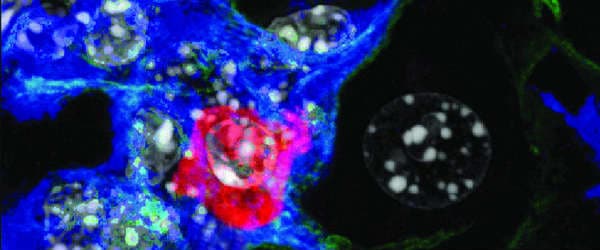Intracellular Cytokine Staining: Letting It All Build Up Inside

Cytokines, those small proteins that modulate immune cell responses, once translated are normally secreted rapidly out of the cell. So, previously we could only check the levels of cytokines secreted in the supernatant, but we wouldn’t know which cell was producing which cytokine.
But what if we had a way to keep the cytokines inside the cell? Then we could tag these proteins with antibodies and label cell surface markers, pop them through a flow cytometer, and identify not only the cytokine levels, but also the specific cell types expressing them.
Welcome to intracellular cytokine staining, otherwise known as ICS!
How does ICS work?
ICS is a technique used in flow cytometry to measure cytokine levels in cells. There are three main steps in ICS:
Stimulate cytokine expression
To perform ICS, you usually stimulate your cells with a specific antigen, or a non-specific cocktail to elicit a more powerful, detectable response (such as Staphylococcus enterotoxin B [SEB]; Phorbol 12-Myristate 13 Acetate [PMA] and Ionomycin; or CD3 and CD28). The problem with measuring antigen-specific responses is it can be as low as 1 in 100,000 cells, so we usually need the clout of a non-specific stimulation to be able to detect anything.
Block cytokine transport
The two main blocking agents to stop the cytokine being released are brefeldin A and monensin. Which one you use depends on the cell type as well as the cytokines of interest; for example monensin is recommended for human IL-1? and IL-6 while brefeldin A is preferred for murine IL-6 and TNF-?.
Take care though, both can affect surface expression of certain antigens, alter the cells’ scatter characteristics as well as lead to a lot of cell death – particularly during longer incubation times; so this part definitely needs quite a bit of optimization.
Both brefeldin A and monensin are available as commercial kits to ease the pain somewhat.
Fix, permeabilize and stain
Once you’ve blocked the release of the cytokines, the next step is to stain for any surface markers you want, and then fix and permeabilize the cells to get the cytokine antibodies inside the cell.
Saponin is the most widely used reagent for permeabilization but others include Triton X-100 or Tween 20; while paraformaldehyde is the most commonly used fixative. Again, there are plenty of commercial kits available.
Fixing and permeabilizing will lyse all the cells (though keeping them intact) so they are of no use if you want live functional studies downstream. But you can use viability dyes (amine-based) which act as a snapshot to let you know which cells were alive or not at time of staining.
You’re pretty much there then – give the samples a couple of washes and acquire the data on the cytometer and then all the fun analyses begin!
A few points to consider when setting up for ICS – to make your life a little easier:
- Activation, incubation and blocking times should be optimized; not a one-size-fits-all situation.
- Activation treatments will be different depending on the required response.
- Antigen-specific responses are extremely difficult to detect and may be as little as 1 in 100,000 cells.
- Saponin treatment is reversible so the wash buffer should contain some saponin also.
- Include a viability marker to exclude dead (at time of staining) cells.
- Titration and controls are vital in every assay but perhaps more so in ICS due to the propensity for non-specific binding, sub-optimal stimulation and incubation etc. Consider single color (compensation) controls, FMO controls, isotype controls, negative/positive controls, etc.
- ICS usually involves a high number of fluorochromes so it’s worth taking the time to design an antibody panel to maximize sensitivity and minimize spreading error, spillover, etc.
- There are plenty of kits for fixing and permeabilizing, and staining, so this might get you home a little earlier in the evening.
Spend a little time optimizing ICS conditions and staining and your life in the lab will be a happier, more productive one and you’ll find you can amass a huge amount of data from a relatively small sample and hopefully get to the crux of what all these pesky cells are really up to!